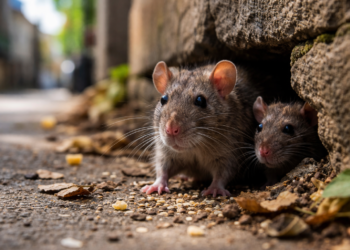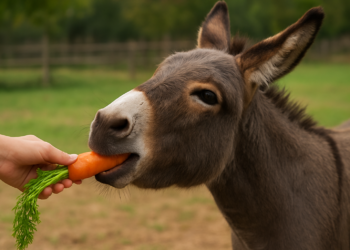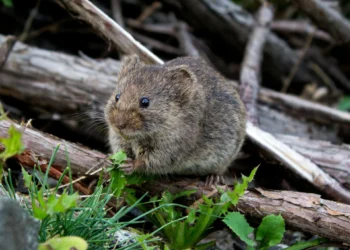Bees are fascinating creatures that play a crucial role in our ecosystem. We often see them buzzing around flowers and gardens, but what happens when they make their way into our homes? It’s not uncommon to find a bee or two inside, but how long can they survive in an environment that’s not their natural habitat?

When a bee enters a house, it’s usually because they’ve gotten lost or are in search of food. While they may be able to survive for a short period of time, a house is not an ideal place for them to live long-term. Bees require specific conditions to thrive, such as access to flowers for nectar and pollen, a hive to live in, and a queen to lay eggs. Without these necessities, their lifespan can be significantly reduced.
So, how long can a bee live in a house? The answer depends on a variety of factors, including the species of bee, the temperature and humidity inside the house, and the availability of food and water. In general, most bees will only survive for a few days to a week without access to their basic needs. However, some species, such as honey bees, may be able to survive for several weeks if they have access to enough food and water.
Bee Biology

Lifespan of Bees
Bees are fascinating creatures that play a vital role in our ecosystem. The lifespan of a bee varies depending on its role within the colony. Worker bees, which are non-reproductive females, have a lifespan of around 6 weeks during the summer months. However, during the winter, they can live for up to 6 months. The queen bee, on the other hand, can live for several years.
Factors Affecting Bee Longevity
Several factors can affect the lifespan of bees. One of the most important factors is the environment in which they live. Bees that live in a healthy environment with access to ample food and water tend to live longer than those that don’t.
Another factor that can affect bee longevity is the presence of pests and diseases. Parasites like varroa mites can weaken bees and make them more susceptible to diseases, which can ultimately shorten their lifespan.
Finally, the genetics of the bee also play a role in determining its lifespan. Some breeds of bees are naturally longer-lived than others, and beekeepers can select for these traits when breeding bees.
In conclusion, the lifespan of bees can vary greatly depending on a variety of factors. By understanding these factors, beekeepers can take steps to ensure the health and longevity of their bees.
Bees in Domestic Environments

When it comes to bees, we usually think of them living in hives or buzzing around flowers in the great outdoors. However, it is not uncommon for bees to find their way into our homes. In this section, we will discuss the typical house environments for bees and their behavior in homes.
Typical House Environments for Bees
Bees can enter homes through small openings such as cracks in walls, gaps in windows, or chimneys. Once inside, they may build their nests in various locations such as attics, walls, or even inside furniture. It is important to note that not all bees are the same, and some species are more likely to be found in homes than others.
Bee Behavior in Homes
When bees enter homes, they may behave differently than they would in their natural habitat. For example, they may become disoriented and fly around aimlessly, or they may become aggressive if they feel threatened. It is important to avoid disturbing them as much as possible, as this can cause them to sting and release pheromones that attract other bees.
If you do find bees in your home, it is best to contact a professional beekeeper or pest control company to safely remove them. Attempting to remove them yourself can be dangerous and may result in harm to both you and the bees.
In conclusion, while bees in domestic environments may seem unusual, it is not uncommon for them to find their way into our homes. Understanding their behavior and typical environments can help us safely and effectively deal with any bee intrusions.
Human-Bee Interactions

Attractants and Deterrents
As humans, we often unintentionally attract bees into our homes. Bees are attracted to sweet smells, bright colors, and open windows. To prevent bees from entering our homes, we can use deterrents such as screens on windows and doors, and sealing any cracks or crevices in our homes. Additionally, we can avoid wearing bright colors and using sweet-smelling perfumes when spending time outside during peak bee activity hours.
On the other hand, if we want to attract bees to our gardens, we can plant flowers that bees are attracted to, such as lavender, sunflowers, and marigolds. However, it is important to note that while bees are important pollinators, they can also sting, so it is important to take necessary precautions and respect their space.
Safety and Coexistence
When it comes to coexisting with bees, it is important to remember that they are an important part of our ecosystem. If we encounter a bee in our home, it is important to remain calm and avoid swatting at them, as this can cause them to become agitated and sting. Instead, we can gently guide them out of our homes using a piece of paper or a cup.
If we have a bee infestation in our home, it is important to contact a professional beekeeper or pest control service to safely and humanely remove the bees. Attempting to remove the bees ourselves can be dangerous and potentially harm the bees.
Overall, by taking necessary precautions and respecting the space of bees, we can safely coexist with them in our homes and gardens.
Bee Survival Without a Hive

When bees are found inside a house, it is important to remove them as soon as possible. However, if some bees are left behind, they may survive for a period of time without a hive. In this section, we will discuss the challenges and adaptations bees face when living without a hive, as well as their food and nutrition needs.
Challenges and Adaptations
Bees are social insects that rely on the hive for protection, temperature regulation, and communication. When bees are forced to live without a hive, they face several challenges. For example, they may be exposed to extreme temperatures, predators, and parasites. To adapt to these challenges, bees may form small clusters to maintain warmth or seek shelter in crevices or other protected areas.
Food and Nutrition Needs
Bees require a balanced diet of nectar and pollen to survive. When living without a hive, bees must forage for their own food. They may visit flowers, trees, or other sources of nectar and pollen. In some cases, bees may also scavenge for food in human environments, such as gardens or trash cans.
It is important to note that bees may not be able to find enough food to survive for an extended period of time without a hive. Additionally, bees living without a hive may be more susceptible to disease and other health issues due to stress and lack of proper nutrition.
In summary, bees can survive for a period of time without a hive, but they face several challenges and adaptations. They must forage for their own food and may be exposed to extreme temperatures, predators, and parasites. It is important to remove bees from a house as soon as possible to prevent them from facing these challenges and ensure their survival.
Bee Rescue and Removal

Professional Removal Services
If you have a bee infestation in your house, it is recommended to hire a professional bee removal service. These services have the necessary equipment and experience to safely remove the bees from your home. They also have the knowledge to identify the type of bees and the best way to remove them.
Professional bee removal services can use different methods to remove the bees, such as vacuuming, trapping, or using chemicals. They will also take measures to prevent the bees from returning to your home.
DIY Removal Methods
If you want to remove the bees yourself, there are some DIY methods that you can try. However, it is important to note that these methods may not be as effective as hiring a professional service and can be dangerous if not done correctly.
One common method is to use a bee trap. This involves placing a trap near the bees’ entrance and waiting for them to enter. Once they are inside, the trap can be removed and the bees can be released elsewhere.
Another method is to use smoke to calm the bees and then remove the hive. This should only be attempted by those who have experience with beekeeping and have the necessary equipment.
It is important to remember that bees are important pollinators and should not be killed unless absolutely necessary. If possible, try to relocate the bees instead of killing them.
Overall, it is best to seek professional help when dealing with a bee infestation in your home. They have the necessary knowledge and equipment to safely remove the bees and prevent them from returning.
Conservation and Importance
Bees are an essential part of our ecosystem and play a crucial role in pollinating crops and wildflowers. As such, it is vital that we take measures to conserve and protect their populations.
Role of Bees in Ecosystems
Bees play a vital role in pollinating plants, which is essential for the reproduction of many crops and wildflowers. Without bees, we would see a significant decline in the production of fruits, vegetables, and other crops. This would not only affect our food supply but also have a ripple effect on the entire ecosystem.
In addition to pollination, bees also help to maintain the biodiversity of ecosystems. They are an important food source for many animals, including birds, bats, and other insects. Without bees, these animals would struggle to find food, which could lead to a decline in their populations.
Supporting Bee Populations
There are several ways that we can support bee populations and help to ensure their survival. One of the most important is to provide them with a habitat that is suitable for nesting and foraging. This can include planting wildflowers and other plants that are attractive to bees, as well as providing nesting sites such as bee hotels.
Another way to support bee populations is to reduce the use of pesticides and other chemicals that can be harmful to bees. Instead, we can use natural pest control methods and organic farming practices that are less harmful to bees and other pollinators.
Overall, it is clear that bees play a vital role in our ecosystem, and it is up to us to take measures to conserve and protect their populations. By providing them with a suitable habitat, reducing the use of harmful chemicals, and supporting sustainable farming practices, we can help to ensure that bees continue to thrive for generations to come.
Frequently Asked Questions
What is the typical lifespan of a bee indoors?
The lifespan of a bee can vary depending on the species and the conditions in which it is kept. However, bees do not typically live very long indoors. Without access to their natural environment and food sources, bees may only survive for a few days to a few weeks.
How can you safely remove a bee from your home?
If you find a bee inside your home, it is important to handle the situation carefully. Bees can become agitated and may sting if they feel threatened. The best way to remove a bee from your home is to contact a professional beekeeper or pest control specialist. They will have the necessary equipment and expertise to safely remove the bee without causing harm.
What should you do if you find a bee inside your residence?
If you find a bee inside your residence, it is best to leave it alone and avoid disturbing it. Bees are generally not aggressive unless they feel threatened. If you are concerned about the bee, contact a professional beekeeper or pest control specialist for assistance.
Can bees survive for extended periods within domestic environments?
Bees are not well-suited for living in domestic environments, as they require access to their natural environment and food sources to survive. While bees may be able to survive for short periods of time indoors, they are unlikely to survive for extended periods without access to their hive.
What factors affect a bee’s survival without access to its hive?
Bees require access to food, water, and their natural environment to survive. Without access to these resources, bees may become stressed and more susceptible to disease and other health issues. Additionally, factors such as temperature, humidity, and ventilation can also impact a bee’s survival in a domestic environment.
Is it possible for a bee to live without food, and if so, for how long?
Bees require a steady supply of food to survive. While they may be able to survive for short periods of time without food, they will eventually become weak and may die. The length of time that a bee can survive without food will depend on a variety of factors, including the bee’s age, health, and the availability of other resources such as water.











